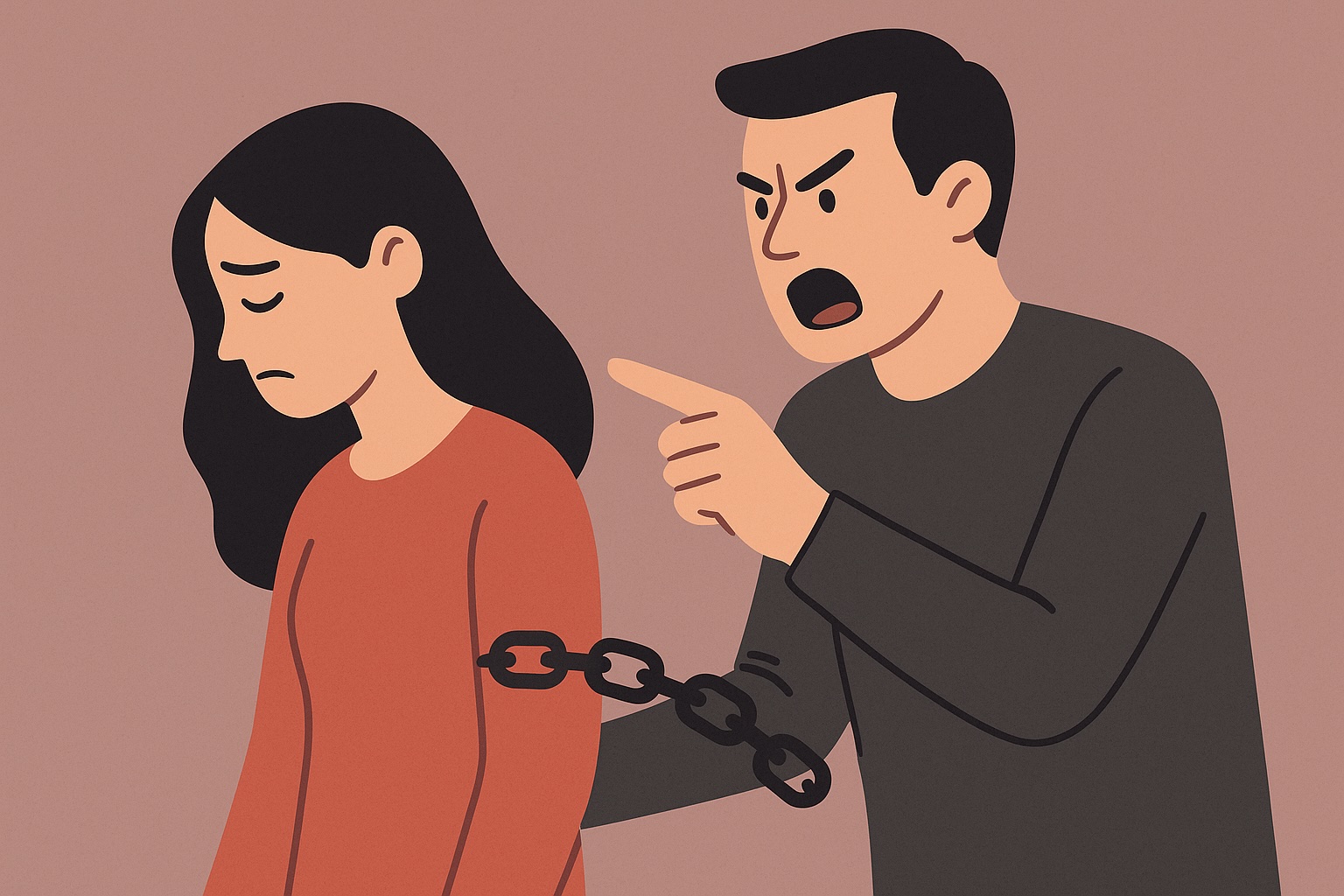Coercive Control: What It Is and How to Identify It in Your Relationship
Coercive control is a silent form of domestic abuse that strips away freedom and safety—without leaving physical marks. Learn the red flags and how it shows up in relationships.

Not all abuse leaves bruises. **Coercive control** is a pattern of dominating behaviors that isolate, intimidate, and control a partner—often without physical violence. It’s now recognized in many Ontario family law cases as a serious form of domestic violence.
Here’s how to recognize coercive control in a relationship—and why it matters.
***
### 🛑 What is Coercive Control?
Coercive control is a **strategic campaign of domination**. It’s about one person **controlling the other’s freedom, choices, and autonomy** over time.
This form of abuse may involve:
* Surveillance or constant monitoring
* Intimidation, guilt, or gaslighting
* Isolation from friends, family, or work
* Micro-management of daily life (what you wear, eat, or do)
* Threats (to report to police, immigration, or child welfare)
* Depriving access to money, transport, or phones
> It often begins subtly and worsens gradually, making it harder to detect—even by the victim.
***
### 🚩 Red Flags of Coercive Control
Ask yourself if your partner:
* Tracks your phone, location, or internet use
* Gets angry when you talk to others without permission
* Controls your clothing, food, or sleep
* Makes you feel like you're always walking on eggshells
* Destroys your belongings to punish you
* Withholds affection as a form of punishment or reward
* Uses your immigration or legal status as leverage
* Tells you you’re “crazy” or “too sensitive” when you object
* Interrogates you about where you've been or who you've talked to
* Blocks you from getting a job or attending school
> **Coercive control is not a single act—it’s a pattern** that chips away at your freedom and self-worth.
***
### 📚 How Canadian Law Sees Coercive Control
* While **not yet a standalone criminal offence** in Canada, coercive control is:
* Considered in **family law and child custody** decisions
* Cited in **restraining order** applications
* Recognized by judges when assessing **emotional harm or danger**
* The **UK and Australia** have already criminalized it. Canada is exploring similar reforms.
***
### 🧩 Coercive Control vs. Other Abuse
* **Physical abuse** = visible harm
* **Sexual abuse** = non-consensual acts
* **Financial abuse** = control of money
* **Coercive control** = **all-consuming power over your life**, including emotional, social, legal, and digital aspects
Often, coercive control is the **foundation beneath other forms of abuse**.
***
### 💬 What Survivors Often Say
* “I wasn’t allowed to leave the house without permission.”
* “He checked my call logs and deleted my friends from social media.”
* “She told me I’d lose the kids if I ever left.”
* “I stopped making choices—I just did what he wanted to keep the peace.”
* “I didn’t even realize it was abuse until I got out.”
***
### 📌 Summary: Understanding Coercive Control
* ✅ A pattern of emotional, psychological, and behavioral domination
* ✅ Often no physical violence—yet extremely dangerous
* ✅ Can include isolation, surveillance, intimidation, and micro-control
* ✅ Widely recognized in Ontario courts as a form of abuse
* ✅ Survivors may not realize they’re being abused until much later
***
### 📞 Where to Get Help
* **Assaulted Women’s Helpline (24/7):** 1-866-863-0511
* **Luke’s Place:** Legal and emotional support for DV survivors
* **211 Ontario:** For services near you
* **Barbra Schlifer Clinic:** Counselling, advocacy, and legal help
* **YWCA Ontario and Shelters:** Many offer trauma-informed support for coercive control
***
### Frequently Asked Questions (FAQs)
#### 1. Is coercive control illegal in Ontario?
As of August 2025, coercive control is not a specific, standalone criminal offence in Canada. However, many of the individual acts that make up a pattern of coercive control *are* illegal (e.g., uttering threats, criminal harassment/stalking, assault). The law is evolving, and family courts in Ontario now recognize coercive control as a serious form of domestic violence when making decisions about parenting and safety.
#### 2. How is coercive control different from physical abuse?
Physical abuse involves acts of violence that cause bodily harm. Coercive control is a psychological form of abuse focused on domination and control. While they are different, they often occur together. Coercive control can be a major warning sign that physical violence may escalate or occur in the future.
#### 3. My partner has never hit me, but I'm scared of them. Could this be coercive control?
Yes. A key element of coercive control is creating a climate of fear. Even without physical violence, constant monitoring, intimidation, and isolation can be incredibly damaging and make you feel trapped and afraid. This is a valid and serious form of abuse.
#### 4. What is "gaslighting"?
Gaslighting is a manipulation tactic where an abuser makes you doubt your own perceptions, memory, and sanity. They might deny that abusive events ever happened, or twist the story to make it seem like your fault. It's a common and very damaging element of coercive control.
#### 5. How can I prove coercive control in court?
Proving a pattern of behaviour can be challenging. It's helpful to keep a detailed log or journal of incidents, including dates and times. Save any threatening text messages, emails, or voicemails. Statements from witnesses like friends, family, or a therapist who have observed the controlling behaviour or its impact on you can also be powerful evidence.
#### 6. Where can I get help if I am experiencing coercive control?
You can get confidential support by calling the Assaulted Women's Helpline at 1-866-863-0511. They can help you understand your situation, create a safety plan, and connect you with local resources in Ontario, such as shelters, counsellors, and legal aid clinics that understand coercive control.
